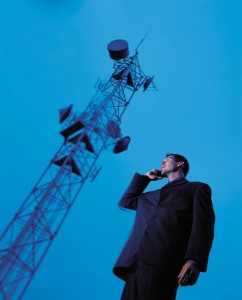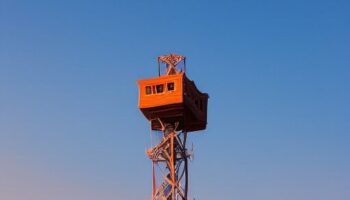 Recent fiasco between Noida Authorities & Telecom Operators, over the issue of mushrooming cellsites in residential area, is fresh example of one more missed opportunity by Telecom Regulators of India in regularizing the telecom tower business, under one unified policy. And now when this fire is soon to reach national capital, there’s urgent attention needed in framing up policy to regularize the cellsites/towers, which not only will ensure uninterrupted services, but also help in setting uniform procedure for cellsites erection across cities.
Recent fiasco between Noida Authorities & Telecom Operators, over the issue of mushrooming cellsites in residential area, is fresh example of one more missed opportunity by Telecom Regulators of India in regularizing the telecom tower business, under one unified policy. And now when this fire is soon to reach national capital, there’s urgent attention needed in framing up policy to regularize the cellsites/towers, which not only will ensure uninterrupted services, but also help in setting uniform procedure for cellsites erection across cities.
It’s been over a decade to the launch of National Telecom Policy and while telecom towers are mushrooming across cities in India, little attention was paid to issues of health hazards due to Electromagnetic Radiation by Base Stations. A lot has been changed ever since NTP-99. India has been adding over 15 million subscribers on an avg per month and according to TRAI, to sustain such high growth, India will need approx 350,000 cellsites by end of 2010 to cater the need of growing subscriber base. The growth of subscriber base has fueled the growth in Telecom Infrastructure Industry, and according to IndiaInfrastructure, the industry is growing at a rate of 17 per cent per annum. But despite this fact, there’s not even uniform procedure to setup cellsites, which varies from cities to cities, creating nuisance for local authorities, residents and telcos too.
According latest stat of Mar 31, 2009, there were about 270,000 towers in the country, of which 100,000 were driven by operator driven JVs, about 125,000 by operators themselves, and about 45,000 were operated by pure play telecom tower companies. But then what should we expect from such policy? According to TRAI, the policy will likely to work out optimum number of telecom towers needed in the city, along with making it mandatory to share cellsites, setting up smaller antennas on building and connecting the same with fibre. The policy is also likely to address the issue of putting up uniform approval procedure for setting up cellsites. In 2005, DoT has placed in policy to share passive infrastructure like building, shelters, power supply etc to reduce the infra cost involved, which later carried forward to sharing of active infrastructure in 2007, including feeder cables, antennas etc.
But then how shall TRAI decide on optimum number of towers required in a given geographical area? As said above, with growing sub base, there’s is growing need of setting up telecom towers to sustain the growth and quality of service. According to Industry executives, the current stand off between local authorities and telecom companies is just the tip of iceberg. While local authorities tend to milk telcos over tower setting up cost (MCD charges Rs 1 lakh per tower, while NDMC charges Rs 2 lakh per tower registration fee, which is again likely to go up to 3-5 lakhs per tower); local authorities are citing the reasons of commercial use of land in residential areas, while locking down the towers. Though, in India, many cities have norms which prohibit the commercial use of residential land, these norms are often taken for granted, which resulted into current stand off between both the parties.
But real issues are different. There are growing concerns over the long term health hazards over setting up cellsites in residential area or near school, hospitals or tourists places. In India, there’s little concern over the issue. In India, you could easily spot cellsites above hospital buildings (Gangaram Hospital or even RML has cellsites in campus), near schools and there’s little care taken while setting up In Building Solution inside these radiation sensitive zones. While there are some precautionary policies, they are certainly not enough. European Union has clearly said of such policies:
The distance between a residential area and an antenna is not a proper indicator of its effect on the overall exposure of the public and scientific evidence does not support the assumption according to which an antenna within 300 meters would have adverse effects on public health. As long as factual exposure remains below the recommended levels, the health of the citizens is to our best knowledge well protected.’
But then how much radiation will be termed as non-hazardous? FCC has clear guide lines:
In the case of cellular base station transmitters, at a frequency of 869 MHz (the lowest frequency used), the FCC’s RF exposure guidelines recommend a maximum permissible exposure level of the general public (or exposure in “uncontrolled” environments) of about 580 microwatts per square centimeter (µW/cm2), as averaged over any thirty-minute period. This limit is many times greater than RF levels typical found near the base of typical cellular towers or in the vicinity of other, lower-powered cellular base station transmitters. For example, measurement data obtained from various sources have consistently indicated that “worst-case” ground-level power densities near typical cellular towers are on the order of 1 µW/cm2 or less (usually significantly less). Calculations corresponding to a “worst-case” situation (all transmitters operating simultaneously and continuously at the maximum licensed power) show that in order to be exposed to levels near the FCC’s limits for cellular frequencies, an individual would essentially have to remain in the main transmitting beam (at the height of the antenna) and within a few feet from the antenna. This makes it extremely unlikely that a member of the general public could be exposed to RF levels in excess of these guidelines from cellular base station transmitters.
For PCS base station transmitters, the same type of analysis holds, except that at the PCS transmitting frequencies (1850-1990 MHz) the FCC’s exposure limits for the public are 1000 µW/cm2. Therefore, there would typically be an even greater margin of safety between actual public exposure levels and the recognized safety limit.
There has been great deal of research carried out over the issue of cellsites radiation hazards, which is beyond the scope of this discussion. But it appears that the stand off between local authorities and telcos is of a commercial nature, where local authorities are citing up lack of documentations and prior permissions issues. In Delhi, which is likely to face the heat of tower lockdown, has over 2500 illegal towers out of current total of 4532. New telecom policy will likely to be in place by Tuesday, but will it answer all the concerns is real question. We need to look at the issue from both commercial as well from health aspects, but unless we are aware of norms, regulations could be of little help. And as said, there’s little expectation from such policy, which is more likely to legalize blacklisted towers by modifying existing disparate norms under one headline, rather than carefully setting up new norms. The consultation paper by TRAI, which will be floated in June, mayn’t cure all ills of tower industry at one go, but certainly its welcome move than never.





